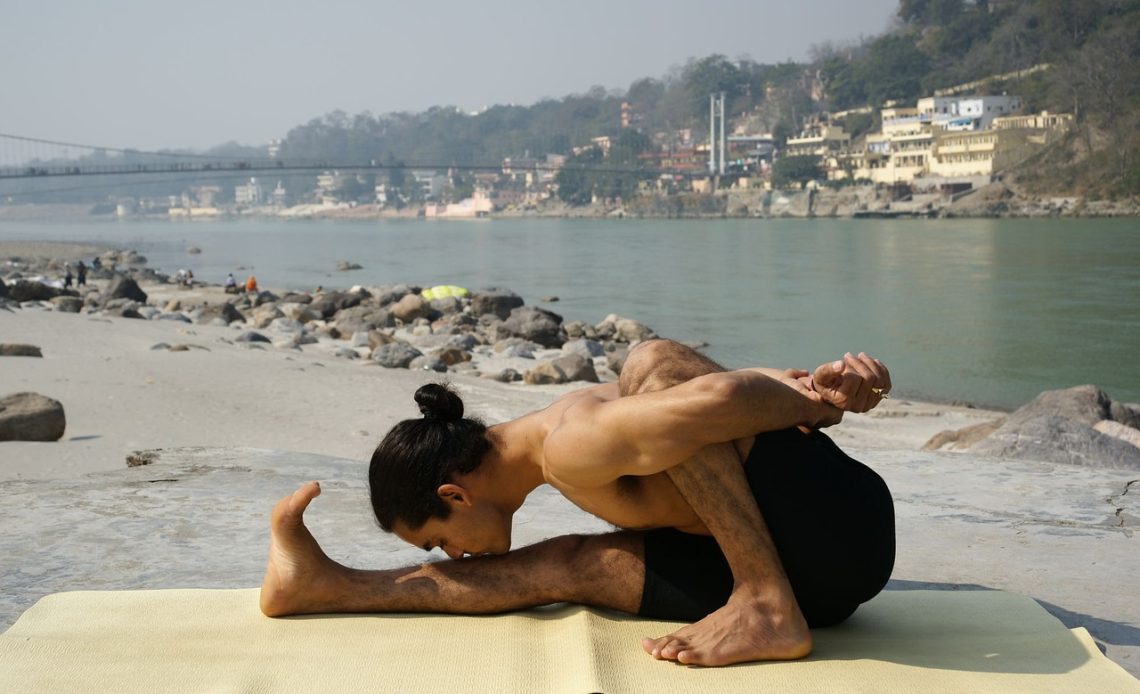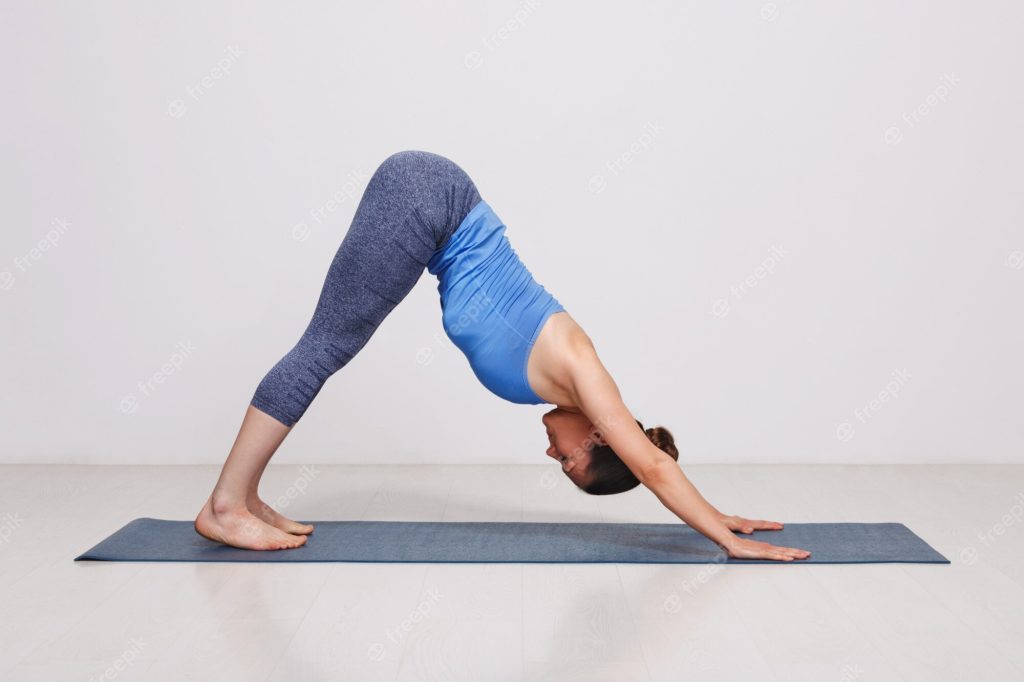
Ashtanga Vinyasa Yoga, a fascinating blend of dynamism and tradition, is a distinctive style of yoga that has captivated countless practitioners worldwide. This guide delves into the roots, principles, and practice of Ashtanga Vinyasa Yoga, providing a comprehensive understanding of this profound yoga style.
1. Understanding the Term: Ashtanga Vinyasa Yoga

Ashtanga Vinyasa Yoga is a unique yoga style that brings together two Sanskrit terms – “Ashtanga,” meaning “eight limbs,” and “Vinyasa,” implying “special placement.” Thus, Ashtanga Vinyasa Yoga symbolizes a special arrangement of eight essential practices or limbs of yoga.
1.1. Ashtanga: The Eightfold Path
The term “Ashtanga” comes from ancient yoga philosophy, as described by the sage Patanjali in his Yoga Sutras. It refers to the eightfold path of yoga that aims to lead practitioners toward enlightenment. These eight limbs encompass moral and ethical guidelines, physical postures, breath control, sensory withdrawal, concentration, meditation, and ultimate absorption, all integral to a holistic yoga practice.
1.2. Vinyasa: The Flow of Movement
On the other hand, “Vinyasa” underscores the significance of the flow of movement in yoga. Rooted in “vi,” meaning “special,” and “nyasa,” indicating “placement” or “attention,” Vinyasa signifies the intentional and harmonious sequencing of postures. It emphasizes the importance of transitions between asanas, turning the practice into a flowing dance of movements coordinated with the breath.
2. The Origins of Ashtanga Vinyasa Yoga
The Ashtanga Vinyasa Yoga style traces back to the teachings of K. Pattabhi Jois, who popularized this dynamic form of yoga in the 20th century. Jois learned this system from his teacher, T. Krishnamacharya, who is often regarded as the father of modern yoga.
2.1. The Yoga Korunta and the Birth of Ashtanga Vinyasa Yoga
Jois’s Ashtanga Vinyasa Yoga is said to be derived from an ancient manuscript called the Yoga Korunta. This text, passed on to Krishnamacharya by his guru, outlined the system of asanas and vinyasas that form the essence of Ashtanga Vinyasa Yoga. This yoga style was revitalized and brought to the mainstream by Jois through the establishment of his Ashtanga Yoga Research Institute in 1948.
3. The Core Principles of Ashtanga Vinyasa Yoga
Ashtanga Vinyasa Yoga is based on certain key elements that contribute to its unique character. The practice is characterized by its emphasis on “Tristhana” or the three places of action: breathing system (Pranayama), posture (Asana), and looking place (Drishti). These core concepts, along with the flow of Vinyasa, form the backbone of Ashtanga Vinyasa Yoga.
3.1. Tristhana: The Threefold Focus
Tristhana, derived from “tri” meaning three and “sthana” referring to place or attention, represents the three crucial aspects of Ashtanga Vinyasa Yoga practice.
3.1.1. Pranayama: The Breath
The breathing system or Pranayama is the first place of attention in Ashtanga Vinyasa Yoga. It involves even and steady breathing, ideally synchronized with the length of the inhalations and exhalations. Pranayama not only refines the physical practice but also aids in calming the mind.
3.1.2. Asana: The Posture
Asana, the second place of attention, signifies the physical postures practiced in Ashtanga Vinyasa Yoga. Each asana is a part of a set sequence aimed at enhancing the body’s strength and flexibility. The asanas, when combined with correct breathing techniques, form the essence of the physical practice.
3.1.3. Drishti: The Gaze
Drishti, or the looking place, is where one focuses the eyes while practicing asana. In Ashtanga Vinyasa Yoga, there’s a prescribed point of focus for every asana. This practice helps maintain concentration and adds a meditative quality to the practice.
3.2. Vinyasa: The Flow
Vinyasa, the flow of movements connecting each asana to the next, is another key component of Ashtanga Vinyasa Yoga. It involves coordinating breath with the transition movements between the asanas, purifying the blood and bringing dynamism to the practice.
4. The Ashtanga Vinyasa Yoga Practice
Ashtanga Vinyasa Yoga involves a specific sequence of asanas that begins with Surya Namaskaras (Sun Salutations), followed by a series of standing and seated postures, and ends with a standard closing sequence.
4.1. The Series of Ashtanga Vinyasa Yoga
Ashtanga Vinyasa Yoga comprises six series of asanas:
- The Primary Series or Yoga Chikitsa, for health or yoga therapy
- The Intermediate Series or Nadishodhana, the nerve purifier
- The Advanced Series or Sthira Bhaga, centering of strength, divided into Advanced A, B, C, and D series
Each series progresses from the previous one, focusing on specific areas of the body and mind, and offering unique benefits.
4.2. The Mysore Style and Teacher-Led Classes
Ashtanga Vinyasa Yoga can be practiced in two ways: the Mysore style and teacher-led classes. The Mysore style refers to the traditional method where students memorize a sequence and practice it independently, with the teacher providing guidance and adjustments. Teacher-led classes, introduced later, guide the entire group of students through a series of postures simultaneously.
5. The Benefits of Ashtanga Vinyasa Yoga
Given its dynamic nature and comprehensive approach, Ashtanga Vinyasa Yoga offers a wide range of benefits.
5.1. Physical Benefits
Ashtanga Vinyasa Yoga helps build strength, flexibility, and stamina. The intense physical practice generates internal heat, which aids in detoxification and improves circulation.
5.2. Mental Benefits
The practice enhances focus and concentration, helping to quiet the mind and achieve mental clarity. It also fosters discipline and commitment.
5.3. Spiritual Benefits
Beyond the physical and mental aspects, Ashtanga Vinyasa Yoga is also a spiritual practice that aims to deepen self-awareness and foster inner peace.
6. Ashtanga Vinyasa Yoga for Beginners
While Ashtanga Vinyasa Yoga is a challenging practice, beginners can certainly embrace this style. Starting with a beginner-friendly class or a modified sequence can make the practice more approachable. Regular practice and gradual progression are key to mastering the Ashtanga Vinyasa sequences.
7. Ashtanga Vinyasa Yoga vs. Other Styles
Ashtanga Vinyasa Yoga stands distinct from other yoga styles, such as Hatha and Iyengar, due to its dynamic nature and specific sequence. Compared to Hatha Yoga, which focuses on individual postures, Ashtanga Vinyasa emphasizes the flow of movement. Unlike Iyengar Yoga, which prioritizes precise alignment, Ashtanga Vinyasa stresses the harmony of breath and movement.
8. Embracing Ashtanga Vinyasa Yoga: A Journey of Self-Realization
Ashtanga Vinyasa Yoga, with its rigorous sequences and deep-rooted philosophy, serves as a potent pathway to self-realization. It challenges the body, calms the mind, and nurtures the spirit, leading to a holistic transformation. Whether you are new to yoga or an experienced practitioner, embracing Ashtanga Vinyasa Yoga can be a life-changing journey.
9. Final Thoughts
Ashtanga Vinyasa Yoga is more than just a physical workout. It’s a comprehensive practice that harmoniously blends movement, breath, and focus, offering profound benefits on physical, mental, and spiritual levels. While it demands discipline and commitment, the rewards it offers are unparalleled. So, whether you’re a beginner or a seasoned yogi, consider stepping onto the mat and immersing yourself in the dynamic flow of Ashtanga Vinyasa Yoga.


